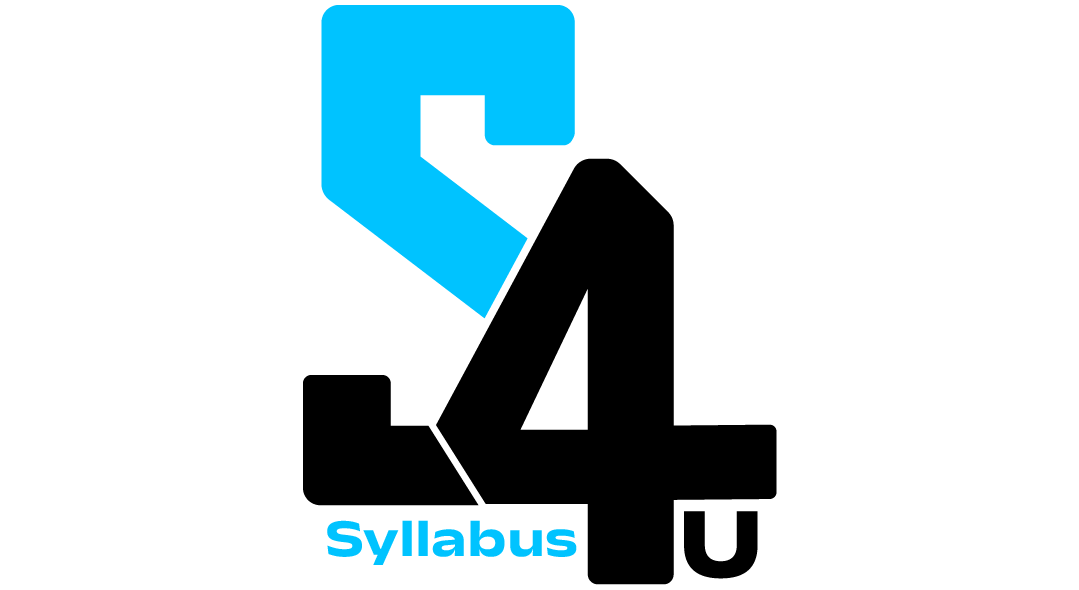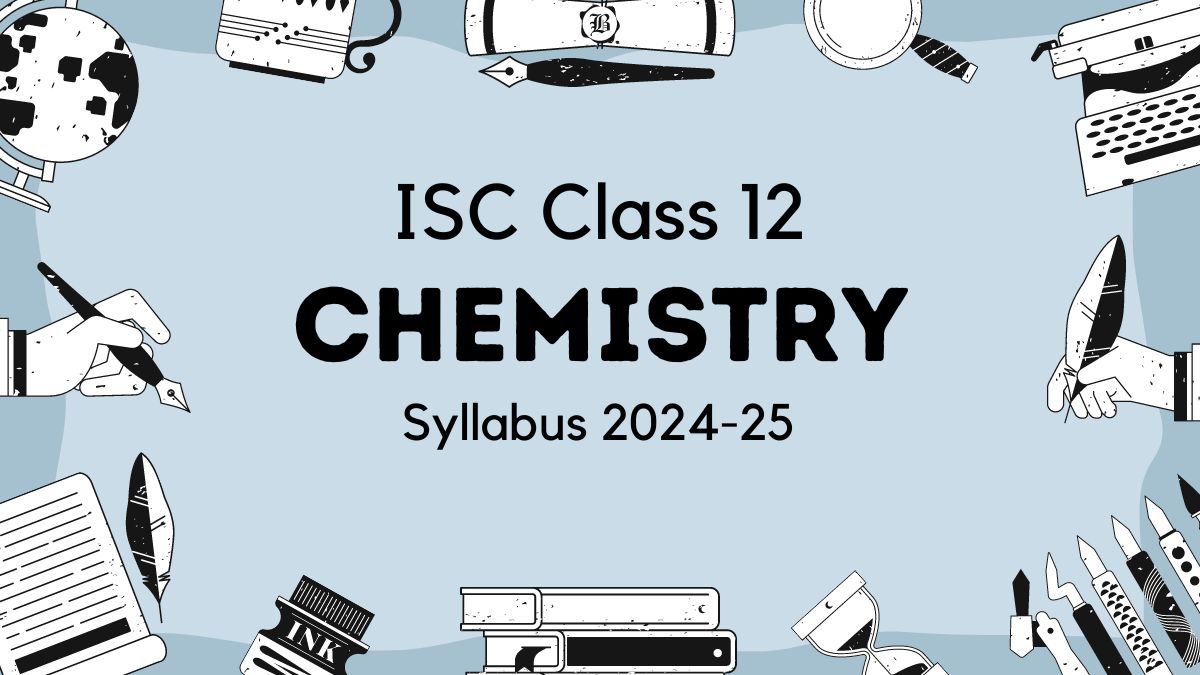The ISC Class 12 Chemistry Syllabus 2024-25 provides a structured approach to mastering key concepts in physical, inorganic, and organic chemistry. It includes detailed study areas like solutions, electrochemistry, chemical kinetics, coordination compounds, and biomolecules, ensuring students gain a comprehensive understanding of both theoretical and practical aspects. The syllabus is designed to develop critical thinking and problem-solving skills through a mix of numericals, chemical reactions, and experimental work. With a balanced focus on theory and hands-on experiments, this curriculum prepares students for both board exams and higher studies in science-related fields.
ISC Class 12 Chemistry Syllabus 2024-25
This document outlines the ISC Chemistry syllabus for Class 12 for the academic year 2024-2025. It provides a comprehensive breakdown of the theory, practical, and project work sections. Paper I (Theory) will be 70 marks, Paper II (Practical) will be 15 marks, and Project Work will contribute 10 marks. The syllabus is divided into three main branches: Physical Chemistry, Inorganic Chemistry, and Organic Chemistry, covering key topics in each area.
Paper I: Theory – 70 Marks
The theory paper is divided into 10 units with a detailed breakdown of each topic, including definitions, explanations, and numericals. Below is a summary of the units and their weightage:
| S.No. | Unit | Weightage (Marks) |
|---|---|---|
| 1 | Solutions (Physical Chemistry) | 25 |
| 2 | Electrochemistry (Physical Chemistry) | |
| 3 | Chemical Kinetics (Physical Chemistry) | |
| 4 | d and f Block Elements (Inorganic Chemistry) | 14 |
| 5 | Coordination Compounds (Inorganic Chemistry) | |
| 6 | Haloalkanes and Haloarenes (Organic Chemistry) | 31 |
| 7 | Alcohols, Phenols, and Ethers (Organic Chemistry) | |
| 8 | Aldehydes, Ketones, and Carboxylic Acids (Organic Chemistry) | |
| 9 | Organic Compounds Containing Nitrogen | |
| 10 | Biomolecules |
Detailed Topics:
- Solutions:
- Types of solutions: solid in liquid, liquid in liquid, gases in liquids, and solid solutions.
- Colligative properties (Raoult’s Law, boiling point elevation, freezing point depression, osmotic pressure).
- Use of colligative properties to determine molecular mass.
- van’t Hoff factor for dissociation/association in solutions.
- Numerical problems based on concentration measures like molarity, molality, and mole fraction.
- Electrochemistry:
- Types of cells: electrolytic and electrochemical.
- Key concepts: EMF of cells, Nernst equation, electrode potential, Faraday’s laws of electrolysis.
- Batteries: Dry cell, lead storage battery, fuel cells.
- Corrosion and its prevention.
- Chemical Kinetics:
- Rate of reactions, factors affecting reaction rate.
- Concepts of order and molecularity.
- Half-life calculations for zero and first-order reactions.
- Arrhenius equation and the effect of temperature on reaction rates.
- d- and f-Block Elements:
- Properties of transition metals (ionization energy, oxidation states, catalytic properties).
- Lanthanoids and Actinoids: Properties and uses.
- Preparation and properties of potassium permanganate and potassium dichromate.
- Coordination Compounds:
- Ligands, coordination number, and oxidation states.
- IUPAC nomenclature, isomerism (structural and stereo).
- Werner’s theory, valence bond theory (VBT), and crystal field theory (CFT).
- Importance in qualitative analysis and metal extraction.
- Haloalkanes and Haloarenes:
- Preparation methods, properties, and reactions.
- Substitution reactions (SN1 and SN2 mechanisms).
- Environmental effects of compounds like DDT and freons.
- Alcohols, Phenols, and Ethers:
- Classification and properties of alcohols and phenols.
- Dehydration mechanisms and oxidation reactions.
- Williamson synthesis for ether preparation.
- Aldehydes, Ketones, and Carboxylic Acids:
- Methods of preparation, nucleophilic addition reactions.
- Oxidation, reduction, and condensation reactions.
- Uses of aldehydes and ketones.
- Organic Compounds Containing Nitrogen:
- Amines: Classification, preparation, and basic nature.
- Diazonium salts: Preparation and applications in organic synthesis.
- Biomolecules:
- Carbohydrates: Structure of glucose, fructose, starch, and cellulose.
- Proteins: Amino acids, peptide bonds, and structure of proteins.
- Vitamins and nucleic acids (DNA, RNA).
Paper II: Practical Work – 15 Marks
Experiments include:
- Titrations:
- Redox titrations using potassium permanganate.
- Calculation of molarity and molecular mass.
- Rate of Reaction Studies:
- Reactions like sodium thiosulphate and hydrochloric acid with graphs.
- Identification of Organic Compounds:
- Tests for functional groups like alcohols, aldehydes, ketones, and carboxylic acids.
- Electrochemistry:
- Setting up voltaic cells and measuring potential.
- Qualitative Analysis:
- Identification of salts using systematic analysis for one anion and one cation.
ISC Class 12 Chemistry Practical Syllabus
The ISC Class 12 Chemistry Practical syllabus is divided into two parts: Practical Work and Project Work & Viva Voce. Below is the detailed syllabus based on the ISC guidelines:
1. Practical Work
A. Quantitative Analysis (Volumetric Analysis)
- Titrations
- Oxidation-reduction titrations (e.g., KMnO₄ with Fe²⁺, oxalic acid).
- Acid-base titrations (e.g., NaOH with HCl).
- Iodometry (e.g., thiosulphate with iodine).
B. Qualitative Analysis (Salt Analysis)
- Identification of Cations
- Cations to be analyzed: NH4+,Pb2+,Cu2+,Al3+,Fe3+,Zn2+,Ca2+,Ba2+,Sr2+,Mg2+\text{NH}_4^+, \text{Pb}^{2+}, \text{Cu}^{2+}, \text{Al}^{3+}, \text{Fe}^{3+}, \text{Zn}^{2+}, \text{Ca}^{2+}, \text{Ba}^{2+}, \text{Sr}^{2+}, \text{Mg}^{2+}.
- Identification of Anions
- Anions to be analyzed: CO32−,SO32−,Cl−,Br−,NO3−,SO42−,CH3COO−\text{CO}_3^{2-}, \text{SO}_3^{2-}, \text{Cl}^-, \text{Br}^-, \text{NO}_3^-, \text{SO}_4^{2-}, \text{CH}_3\text{COO}^-.
C. Preparation of Inorganic Compounds
Examples include:
- Preparation of Mohr’s salt\text{Mohr’s salt} (Ferrous ammonium sulfate).
- Preparation of Potash alum\text{Potash alum} (Double sulfate of potassium and aluminum).
D. Experiments Related to pH
- Study the change of pH of solutions by adding strong acids and bases.
- Identify the pH using pH papers or universal indicator.
E. Chemical Kinetics
- Study of reaction rates (e.g., reaction between sodium thiosulphate and HCl).
F. Electrochemistry
- Determination of EMF of a cell.
2. Project Work & Viva Voce
- Students must complete a chemistry-related project. The project can be an investigation, model, or theoretical work. Some examples include:
- Analysis of soft drinks for acidic content.
- Estimation of Vitamin C in fruit juices.
- Comparative study of different soaps/detergents.
- Viva Voce will be based on the project and practicals performed during the year.
3. Evaluation Scheme
| Component | Marks |
|---|---|
| Practical Work | 20 |
| Project Work | 10 |
| Viva Voce | 10 |
| Total | 40 |
Project Work and Practical File – 15 Marks
- Project Work: Students will carry out creative chemistry projects, with a few suggested topics like amino acids, vitamins, and nucleic acids.
- Practical File: The chemistry practical file will be evaluated based on completeness and accuracy of recorded experiments.
ISC Class 12 Chemistry Syllabus 2024-25 PDF Download
The ISC Class 12 Chemistry Syllabus can be downloaded in PDF format for the academic year 2024-25. This PDF provides all the necessary details for theory, practicals, and project work, making it easier for students to prepare.
ISC Class 12 Chemistry Syllabus 2024-25-Click Here To Download PDF
Related Post:
| ISC Class 12 Legal Studies Syllabus | ISC Class 12 Biology Syllabus |
| ISC Class 12 Chemistry Syllabus | ISC Class 12 Physics Syllabus |
| ISC Class 12 Maths Syllabus | ISC Class 12 English Syllabus |

